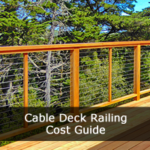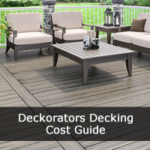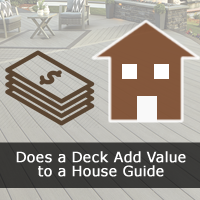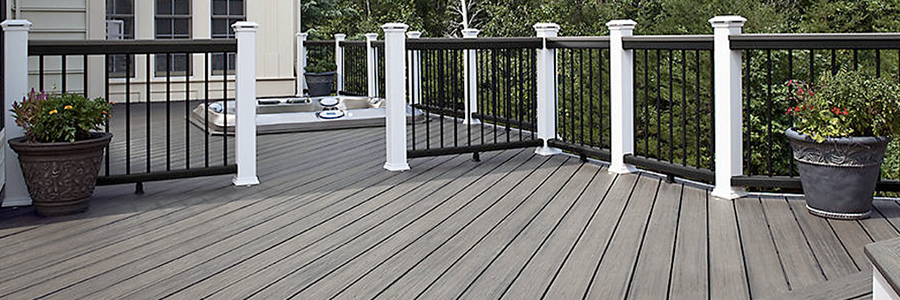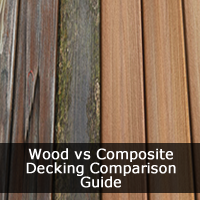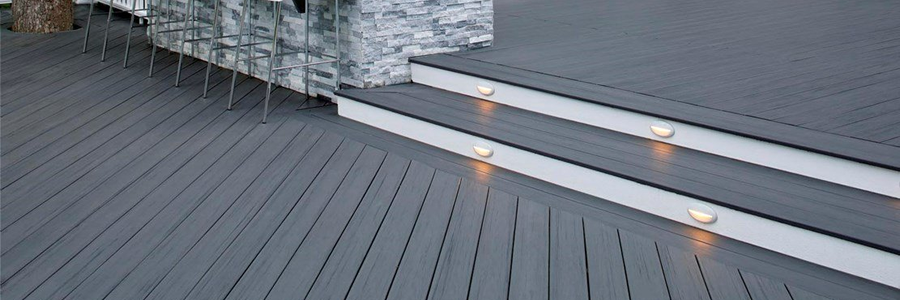The average cost to stain a deck starts at about $0.75 per square foot for DIY and up to $4.25 per square foot when hiring a pro. Restaining a deck costs roughly the same.
The stain a deck cost from most contractors include cleaning the deck, making minor repairs such as fastening loose boards and filling wood gouges. Other deck staining cost factors are what type of cleaning is done and whether you hire a pro or do the work yourself.
Average DIY deck staining cost: $0.75 – $1.40 per square foot
Average Contractor deck staining cost: $2.75 – $4.25 per square foot
Here are stain a deck cost estimates per square foot when pros are hired:
- 10 x 10, or 100 square feet: $275 to $415
- 12 x 15 or 180 square feet: $495 to $745
- 12 x 20 or 240 square feet: $660 to $995
- 15 x 20 or 300 square feet: $825 to $1,245
- 15 x 25 or 375 square feet: $1,030 to $1,550
- 20 x 25 or 500 square feet: $1,375 to $2,075
Below is the Deck Stain Costs, in this Chart are national averages per square foot.
Note: The DIY Wash & Stain price includes the cost of power washer rental, deck sealer and stain combined in one product – or deck paint if that’s your preference – and applicator tools such as rollers, brushes and a stain/paint tray.
Overview of Deck Staining Costs
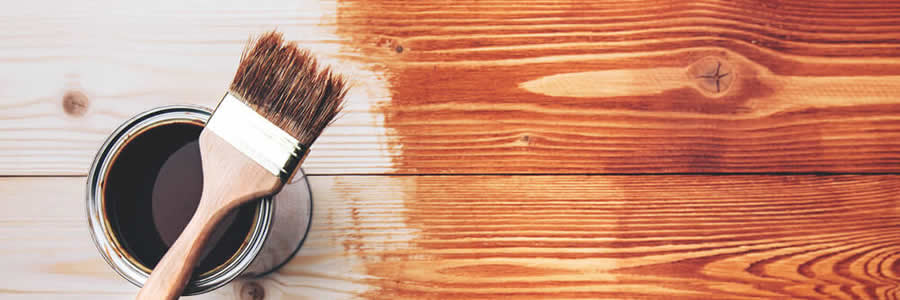
A beautiful deck is one of the best investments you can make on the outside of your home, and maintaining your deck is important in order to get the best return on that investment. On average, wood decks should be stained every two to three years. Stain protects your deck from mold, rot, mildew, and insect damage. Stain also repels moisture and provides protection from UV rays.
One of the most important considerations when staining a deck is whether to do it yourself or hire a deck professional. Doing it yourself saves on labor costs but can take considerable time and energy and requires an array of tools.
Professionals also know how to avoid common mistakes when staining a deck such as uneven stain application, streaking and incomplete preparation.
Factors in the Cost of Staining a Deck
The following list includes factors to consider when estimating your cost of staining or restaining a deck:
- Deck Size – Of course, the bigger the deck, the more costly the project, but the cost per square foot does go down slightly as deck size increases.
- Extra components – Does your deck have stairs, railings, ledges, or built-in benches that will need to be cleaned and stained? These extras can increase costs between 20% and 40%.
- Dirtiness – Very dirty and stained decks take more time to clean, so cost goes up.
- Damages – Most minor repairs, like tightening loose deck boards or removing and filling a small amount of wood rot are generally included in cost estimates. Major repairs such as replacing deck boards might push deck staining costs above the estimates given here. You can learn more about this topic on our Deck Repair and Maintenance page.
- Deck shape – Square and rectangular decks are the easiest to clean and stain. Irregularly shaped decks or decks with multiple levels will add to the cost of staining or restaining the deck.
- Quality of deck stain – Using one of the best deck stain and sealer combinations to stain a deck will provide increased protection but will also be more expensive. Over the course of 20 years, your maintenance costs will likely be lower if you use a better grade of deck stain and sealer combination.
- Time of Year – While warm, dry weather is the best time to stain a deck, hiring a professional will likely cost more in fair weather since demand is higher. Weather permitting, having your deck stained in the off-season can save money.
Power Washing Decks and Prep Work Costs
Another factor when determining the stain a deck cost is whether you will be deep cleaning the surface with a power washer. Power washing will remove dirt and debris embedded in the grain of the wood, allowing fresh stain to penetrate deeper for increased protection. This will improve both the look of your deck and the durability.
Power Washer – Rent vs Buy
Power washing is something you can do yourself, either by purchasing or renting a machine, or by a deck professional. Renting a pressure washer will cost around $50 – $60 for four hours or around $80 – $100 per day. A refundable deposit is also required for rental.
Purchasing a power washer
A power washer is suitable for deck restoration will cost $250 to $400. That will boost the square foot cost for deck staining, but you’ll likely use the machine to wash siding, roofing, concrete and asphalt driveways, vehicles and more. If you like DIY rather than dishing out the cost to pay someone to stain a deck, buying a power washer will “pay for itself” in labor costs pretty quickly.
Power Washing Pro Tip
Pros recommend a PSI of about 1,500 for washing most decks. Start at about 1,000 on an inconspicuous part of the deck. If the pressure washing isn’t damaging the deck, boost pressure to about 1,500 and complete the work. Keep the wand 12-18 inches above the deck surface. Here is a basic demo on using a power washer to clean a deck.
A deck professional will have a power washer available and you won’t have to worry about setting the pressure too high, which can damage the surface, or too low, not getting the wood fully clean.
A power washer will remove any minor flaking or peeling of a previous stain or paint, but if the peeling is severe, it will be necessary to use a deck stripper before restaining. A deck stripper ensures a smooth, clean surface that the new stain can adhere to. Any mold or mildew will also need to be treated.
Even if your deck is in good condition, it is a good idea to give your deck a light sanding before applying new stain. Sanding the deck will remove a layer of dirty, stained wood. And it will open up the woodgrain for the better reception of wood stain/sealer. If the deck is older or more damaged, a heavier stain may be necessary. Orbital sanders can be rented from your local hardware store from about $50-$65 per day. If you’re planning a DIY budget for the cost to restain deck boards, Deck rails and stairs, consider rental fees.
Types of Deck Stain
Commonly Deck stains come in water-based and oil-based options. Oil-based stains are more commonly used, as they penetrate deeper into the wood and provide a richer look. Oil-based stains do take longer to dry than water-based stains, which is something to consider in choosing when to stain your deck.
One gallon of stain costs between $25 – $55 and will cover about 200 – 300 square feet. Most stains today include a sealant, but if not, this will need to be purchased separately. Using a professional contractor will help take the guesswork out of choosing the correct stain for your project.
How to Stain a Deck FAQ’s
Q: How often do I need to stain my deck?
A: To maintain the deck’s look and durability, it should be stained every 2-3 years. This will also extend the lifespan of the deck.
Q: How long will it take to stain my deck?
A: Typically, staining a deck takes 4 hours per 100 square feet, more if you will be staining rails and stairs. Keep in mind, this is only the time it takes for the actual staining. The total time will depend on the amount of prep work required. This could take an additional couple of days.
Q: How much stain do I need for my deck?
A: A gallon of stain covers approximately 200-300 to square feet. If you are also staining railings, increase your stain needs by at least 20%.
Q: What tools do I need to stain my deck?
A: Basic tools include a stain applicator pad and pole, quality brushes, and a stain tray. Depending on the state of the deck, you may also need to rent or buy a pressure washer and rent or buy an orbital sander.
Q: Are there any special considerations when staining pressure treated wood?
A: If the wood has been stained before, there is no special prep necessary for staining pressure treated wood. The deck can be cleaned and stained as normal lumber. If your pressure-treated deck is new and has not yet been stained. Experts recommend waiting 2 to 3 weeks before sealing and 3 to 12 months before staining.






